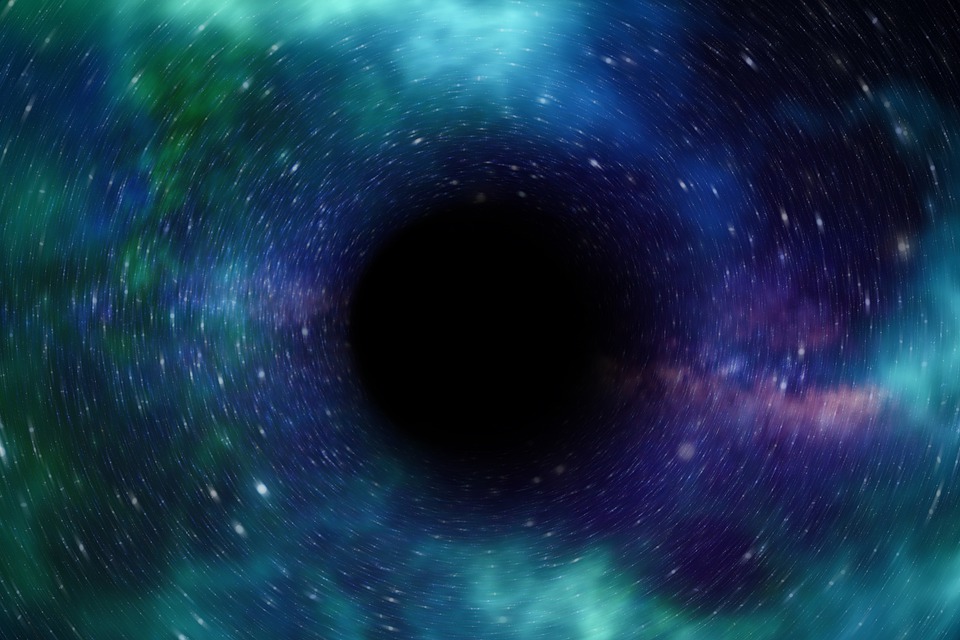Black holes are one of the most mysterious objects in the universe and were first brought up by renowned scientist Albert Einstein. With the possibility of wandering black holes being able to consume our own planet, the scientist’s theory surrounding black holes may potentially keep Earth from getting sucked in.
The documentary “Doomsday: How the World Will End” on History revealed Einstein’s theory that suggests what lies beyond the black hole may not be as dangerous as it appears to be. In the theory, the center or core of the black hole may likely have a gravitational singularity or a region in the black hole where spacetime curvature is infinite. The documentary noted that Einstein’s equations revealed that our planet could slip through a black hole and into a parallel universe unharmed.
“If you take a look at Einstein’s equations, you realize that if a black hole is spinning rapidly -- and that’s what we see them all doing in space -- then the singularity is actually a ring,” said theoretical physicist Michio Kaku. “If you fall through the ring, you don’t actually die, you are not spaghettified. You can actually go through the ring, then the question is where does it lead to?”
According to the equations, there would be a parallel universe on the other side of the black hole. However, planetary geoscientist Ben McGee explained why this is only a fringe theory for now. Dr. McGee explained back in May that the theory was based on actual scientific research made in the 20th century. This suggested that the singularity would warp space dramatically that it could potentially connect to other parts of the cosmos.
Previously, a black hole that is believed to be at the heart of a distant galaxy cluster known as Abell 2261 was nowhere to be found according to observations by the Hubble Space Telescope and the Chandra X-ray Observatory. Analyzing data from previous observations made by Chandra in 1999 and 2004 and in 2018, they found that the source of the x-rays that were detected was nowhere to be seen.
This finding has left astronomers wondering where the supermassive black hole might be. One theory is that the black hole was kicked out of the center at some point in time, which has since presented the possibility that black holes may wander.



 Is space worth the cost? Accounting experts say its value can’t be found in spreadsheets
Is space worth the cost? Accounting experts say its value can’t be found in spreadsheets  Neuralink Expands Brain Implant Trials with 12 Global Patients
Neuralink Expands Brain Implant Trials with 12 Global Patients  Lost in space: MethaneSat failed just as NZ was to take over mission control – here’s what we need to know now
Lost in space: MethaneSat failed just as NZ was to take over mission control – here’s what we need to know now  SpaceX’s Starship Completes 11th Test Flight, Paving Way for Moon and Mars Missions
SpaceX’s Starship Completes 11th Test Flight, Paving Way for Moon and Mars Missions  FDA Lifts REMS Requirement for CAR-T Cell Cancer Therapies
FDA Lifts REMS Requirement for CAR-T Cell Cancer Therapies  NASA Cuts Boeing Starliner Missions as SpaceX Pulls Ahead
NASA Cuts Boeing Starliner Missions as SpaceX Pulls Ahead  Blue Origin’s New Glenn Achieves Breakthrough Success With First NASA Mission
Blue Origin’s New Glenn Achieves Breakthrough Success With First NASA Mission  Neuren Pharmaceuticals Surges on U.S. Patent Win for Rare Disorder Drug
Neuren Pharmaceuticals Surges on U.S. Patent Win for Rare Disorder Drug  Tabletop particle accelerator could transform medicine and materials science
Tabletop particle accelerator could transform medicine and materials science  Eli Lilly’s Inluriyo Gains FDA Approval for Advanced Breast Cancer Treatment
Eli Lilly’s Inluriyo Gains FDA Approval for Advanced Breast Cancer Treatment  Cogent Biosciences Soars 120% on Breakthrough Phase 3 Results for Bezuclastinib in GIST Treatment
Cogent Biosciences Soars 120% on Breakthrough Phase 3 Results for Bezuclastinib in GIST Treatment  Ancient Mars may have had a carbon cycle − a new study suggests the red planet may have once been warmer, wetter and more favorable for life
Ancient Mars may have had a carbon cycle − a new study suggests the red planet may have once been warmer, wetter and more favorable for life  Lab-grown meat: you may find it icky, but it could drive forward medical research
Lab-grown meat: you may find it icky, but it could drive forward medical research  Trump Administration to Launch Autism Initiatives Targeting Acetaminophen Use and New Treatment Options
Trump Administration to Launch Autism Initiatives Targeting Acetaminophen Use and New Treatment Options  NASA Astronauts Wilmore and Williams Recover After Boeing Starliner Delay
NASA Astronauts Wilmore and Williams Recover After Boeing Starliner Delay 































